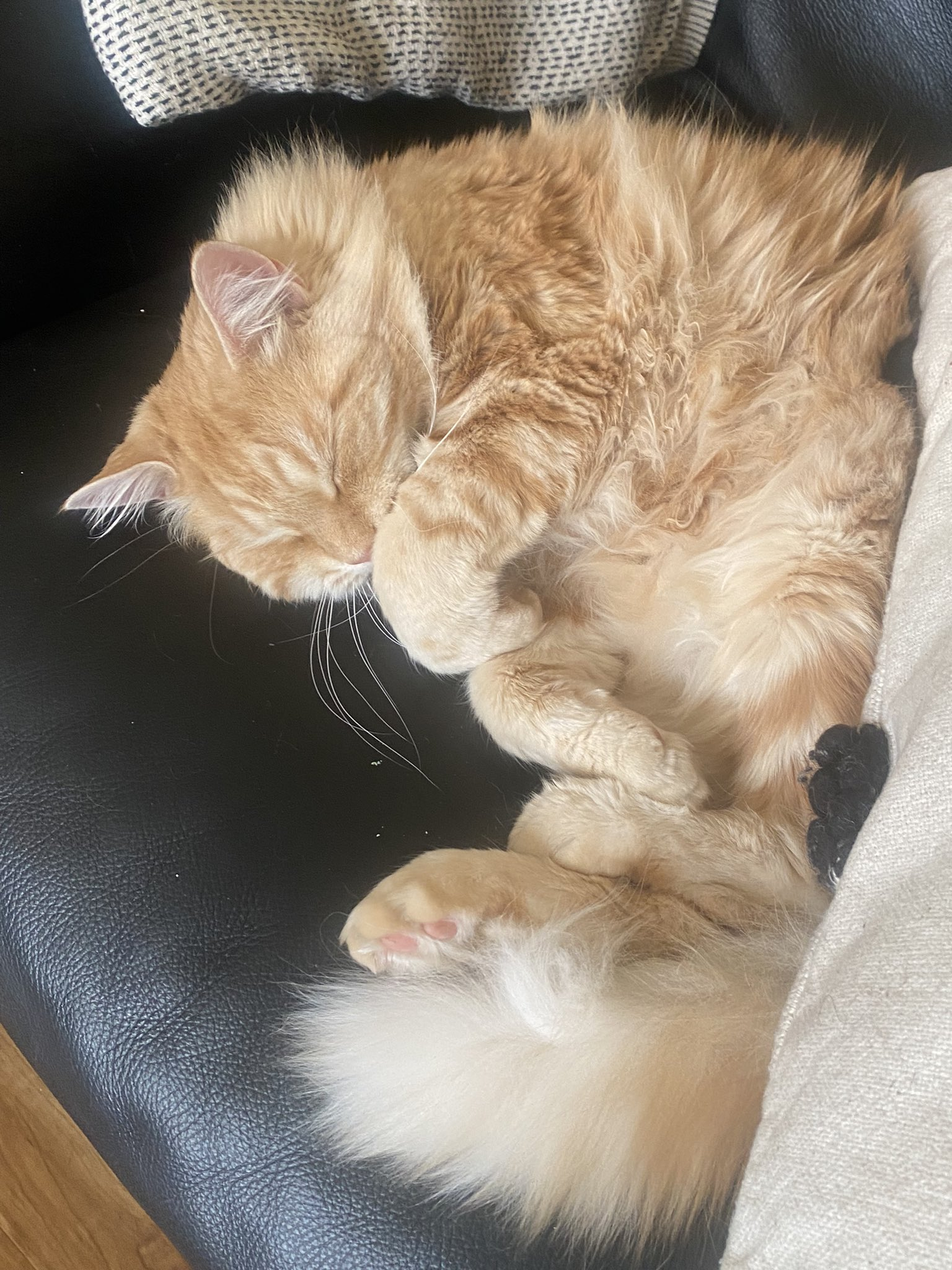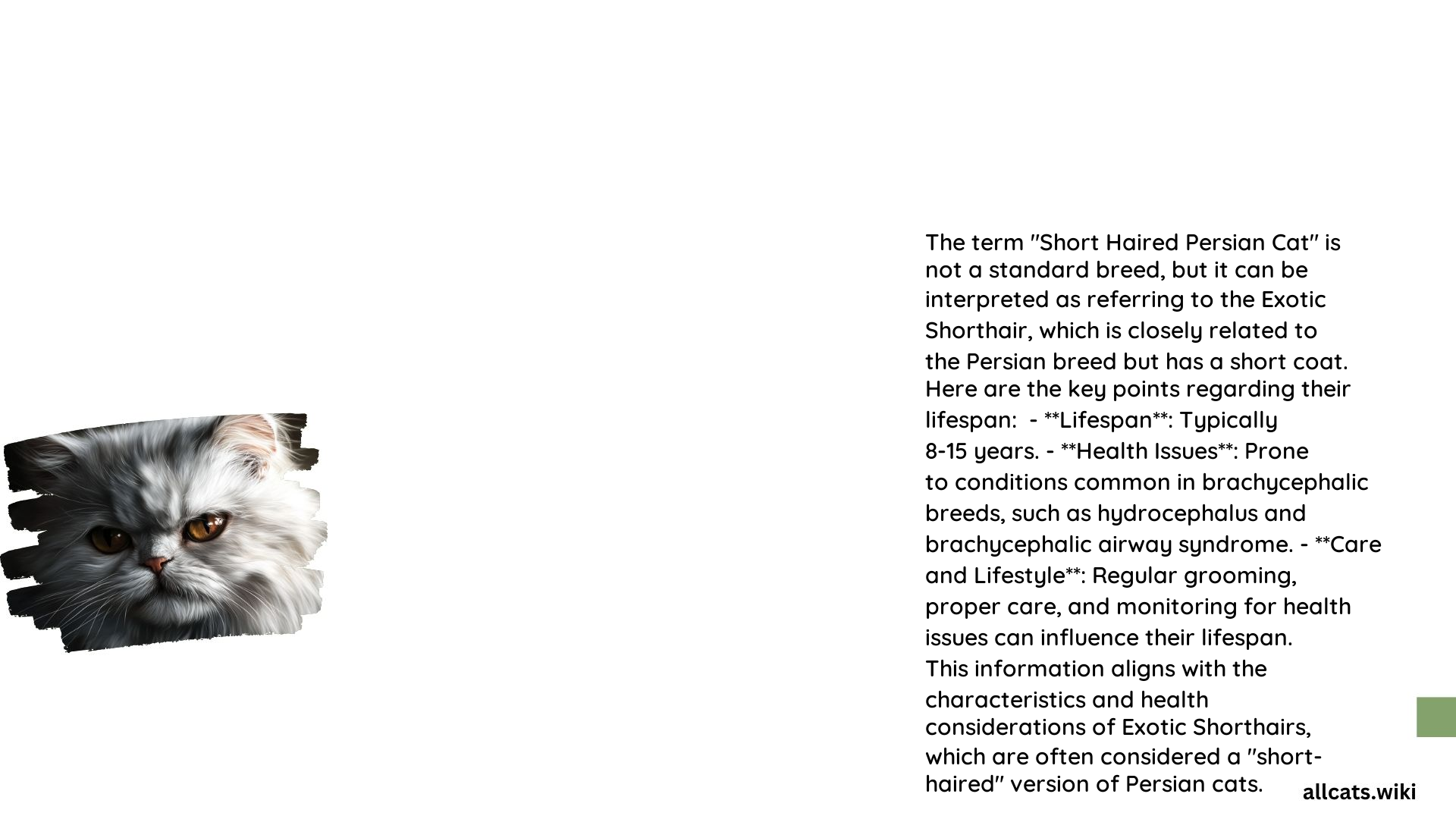The average lifespan of a short-haired Persian cat, also known as an Exotic Shorthair, is typically between 8 to 15 years, which is slightly shorter than the 15 to 20 years lifespan of a long-haired Persian cat. This difference in lifespan can be attributed to various health considerations and grooming practices.
What is the Average Lifespan of a Short Haired Persian Cat?

The average lifespan of a short-haired Persian cat, or Exotic Shorthair, is generally reported to be between 8 to 15 years. This is slightly shorter compared to the average lifespan of 15 to 20 years for a long-haired Persian cat. However, it’s important to note that individual cats may have varying lifespans depending on various factors.
What Factors Influence the Lifespan of a Short Haired Persian Cat?

Health Considerations
- Brachycephalic Issues: Both Persian and Exotic Shorthair cats can suffer from brachycephalic syndrome, which includes breathing difficulties, narrowed nostrils, and elongated soft palates. These issues can significantly impact their lifespan.
- Dental and Eye Problems: Persian cats are prone to dental disease, overgrown nails, and eye discharge, which can also affect Exotic Shorthairs to some extent.
- Other Health Issues: Exotic Shorthairs can inherit conditions from their Persian parentage, such as hydrocephalus and heart conditions.
Grooming Practices
- Frequency of Grooming: While Exotic Shorthairs require less grooming compared to long-haired Persians, they still benefit from weekly brushing to prevent matting and reduce shedding. This frequency can help maintain their coat health and reduce the risk of skin issues.
- Types of Grooming Tools: For Exotic Shorthairs, a soft-bristle brush or a rubber brush is recommended for weekly grooming. These tools help distribute skin oils and prevent matting without causing irritation.
- Associated Costs: The cost of grooming for Exotic Shorthairs is generally lower than for long-haired Persians. However, regular veterinary check-ups and preventive care for common health issues can still incur significant costs.
What are the Best Practices for Caring for a Short Haired Persian Cat?
- Regular Veterinary Check-ups: Regular visits to the vet are crucial for early detection and management of health issues such as dental disease, eye problems, and brachycephalic syndrome.
- High-Quality Diet: Feeding a high-quality diet that is appropriate for the cat’s age and health conditions can help maintain overall health and longevity.
- Play and Enrichment: Providing adequate play and enrichment activities can help keep the cat physically and mentally healthy.
- Monitoring Health: Keeping a close eye on the cat’s health, especially for signs of breathing difficulties, dental issues, or other common problems, is essential for extending their lifespan.
Conclusion
In summary, the average lifespan of a short-haired Persian cat, or Exotic Shorthair, is typically between 8 to 15 years, which is slightly shorter than the 15 to 20 years lifespan of a long-haired Persian cat. This difference can be attributed to various health considerations, such as brachycephalic issues, dental and eye problems, and other inherited conditions. Additionally, grooming practices and associated costs can also impact the lifespan of these cats. By following best practices, such as regular veterinary check-ups, a high-quality diet, and close monitoring of the cat’s health, owners can help extend the lifespan of their short-haired Persian cats.
References:
1. Bear Creek Vet Online: Link
2. Royal Veterinary College: Link
3. PetMD: Link
